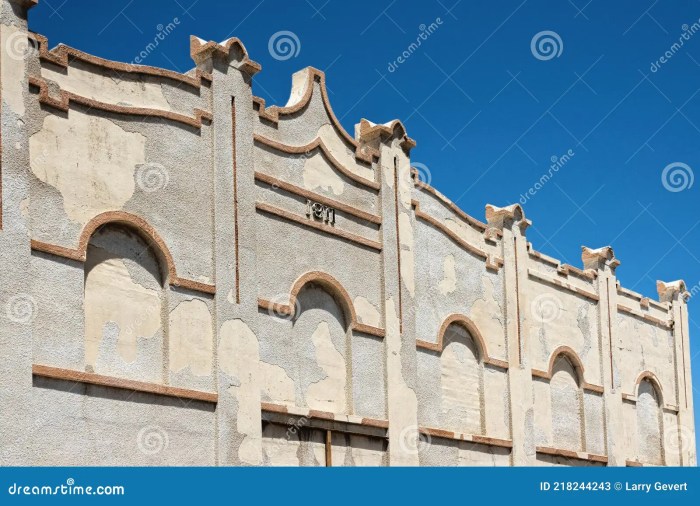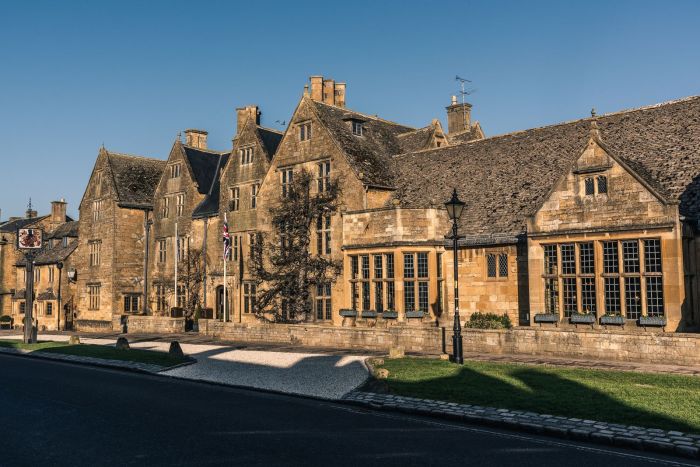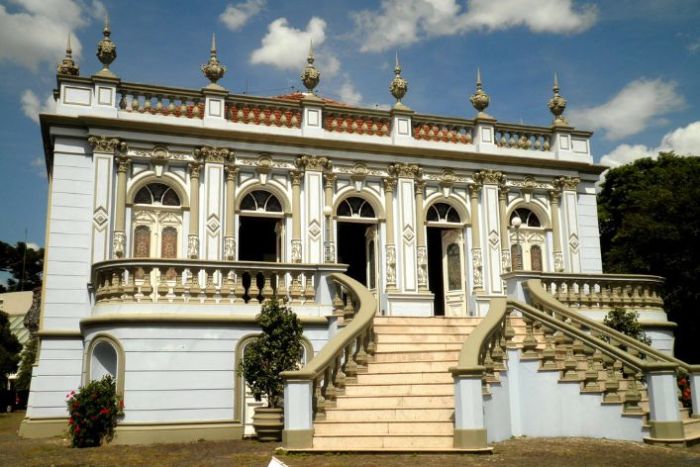Luxury Hotels With Historic Architecture You Can Stay In
Luxury Hotels with Historic Architecture You Can Stay In offer a unique escape that blends the charm of the past with modern comfort. Each stay in these hotels is like stepping into a beautiful storybook, where the walls whisper tales of bygone eras and every corner holds a piece of history. The exquisite architecture not only enhances the elegance of luxury hospitality but also creates unforgettable experiences that resonate deeply with guests.
As you explore these remarkable hotels, you will find that the significance of architecture goes beyond aesthetics; it enriches your journey, making every moment more meaningful and memorable. From grand ballrooms to intricately designed facades, historic hotels provide a captivating backdrop for your travel adventures.
Introduction to Luxury Hotels with Historic Architecture
Staying in historic hotels offers a unique experience, allowing guests to immerse themselves in the rich tapestry of the past. These hotels often boast architectural features that tell stories of bygone eras, creating a sense of nostalgia and wonder. The charm of aged walls, intricate moldings, and grand staircases evokes an ambiance that modern hotels often strive to replicate but can rarely match.Architecture plays a pivotal role in luxury hospitality, serving not only as the backdrop for a guest’s stay but also as a key element of the overall experience.
The significance of design, materials, and craftsmanship in historic hotels sets them apart, making each space a living testament to artistry and history. Guests are not just renting a room; they are stepping into a narrative that captures the essence of a specific time and place, enhancing their travel experience.
Architectural Features That Define Historic Hotels
The architectural elements of historic hotels are vital in creating a captivating atmosphere. Many of these hotels showcase timeless styles such as Gothic, Renaissance, or Baroque, offering guests a glimpse into the aesthetic values of previous generations. Elements like vaulted ceilings, stained glass windows, and ornate fireplaces contribute to a distinctive ambiance that enhances the luxury experience.Key architectural features commonly found in historic hotels include:
- Heritage Facades: The exterior designs often reflect the historical significance of the building, with ornate details that attract admiration and curiosity.
- Unique Floor Plans: Many historic hotels have irregular layouts that add to their charm, offering cozy nooks and grand halls in unexpected places.
- Period Decor: Furnishings and decor that represent the era in which the hotel was built enhance the authenticity of the experience, allowing guests to feel as though they have traveled back in time.
- Outdoor Spaces: Historic hotels often feature beautifully landscaped gardens or courtyards that provide serene retreats and reflect the design aesthetics of the past.
- Art Installations: Many hotels integrate artworks that resonate with their historical context, adding layers of meaning and beauty to the ambiance.
The blend of these architectural elements not only creates a visually stunning environment but also invites guests to engage with the history embedded within the hotel. Staying in such a space encourages a deeper appreciation for both the past and the present, making every moment spent there truly memorable.
Notable Examples of Historic Luxury Hotels
Across the globe, there are luxury hotels that not only provide exceptional accommodations but also tell a story through their historic architecture. These hotels stand as testaments to the past, offering guests a unique opportunity to experience history while enjoying modern comforts. Each structure reflects a rich tapestry of cultural influences, architectural styles, and historical significance.The blend of luxury and history gives these hotels a distinctive charm, drawing travelers who seek more than just a place to stay.
Below are some remarkable examples of historic luxury hotels that showcase diverse architectural styles and compelling backstories.
Examples of Historic Luxury Hotels
The following hotels are celebrated for their architectural beauty and historical relevance, each providing a glimpse into a different era and style:
-
The Savoy, London
“A landmark of hospitality since 1889, The Savoy embodies Edwardian elegance with its iconic Art Deco style.”
Originally opened in 1889, The Savoy was the first hotel in Britain to offer electric lights, and its stunning riverfront location has made it a favorite among royals and celebrities alike. The blend of Edwardian and Art Deco designs creates a lavish ambiance that transports guests back in time.
-
The Ritz, Paris
“A symbol of luxury and elegance, The Ritz has been an integral part of Parisian culture since 1898.”
This hotel has a storied past, hosting famous figures such as Coco Chanel and Ernest Hemingway. The Ritz’s exquisite Louis XVI architecture and opulent interiors offer a glimpse into the grandeur of Paris in the late 19th century.
-
Hotel del Coronado, California
“A National Historic Landmark, this beachfront hotel represents the Victorian architectural style.”
Built in 1888, Hotel del Coronado is an iconic example of wooden Victorian architecture, known for its distinctive red roofs and sprawling structure. It has welcomed numerous famous guests and has been featured in movies, further cementing its place in American history.
-
Palace Hotel, San Francisco
“The Palace Hotel boasts a magnificent Beaux-Arts façade and has been a symbol of luxury since 1875.”
With its grand chandeliers and opulent decor, the Palace Hotel reflects the lavish lifestyle of the Gilded Age. It was rebuilt after the 1906 earthquake, showcasing resilience and a commitment to preserving its historic character.
-
Hotel Nacional de Cuba, Havana
“An architectural gem of the 1930s, this hotel captures the essence of Cuban history and culture.”
The Hotel Nacional is a remarkable blend of Art Deco and neoclassical styles. Opened in 1930, it has hosted many historical figures, embodying the spirit of Cuba during a time of great social change.
Each of these hotels not only offers luxurious accommodations but also serves as a portal to the past, where architectural marvels and rich histories entwine to create unforgettable experiences for their guests.
Benefits of Staying in Historic Hotels
Staying in historic hotels offers travelers a unique opportunity to immerse themselves in a rich tapestry of culture and history. These hotels not only provide luxurious accommodations but also connect guests to the past, making each stay a memorable experience. The charm, character, and stories embedded within the walls create an atmosphere that is unmatched by modern establishments.One of the most significant benefits of staying in historic hotels is the cultural experiences they offer.
These hotels often feature architecture and decor that tell a story, reflecting the era in which they were built. Guests can enjoy guided tours that delve into the history of the building and its surrounding area, enriching their understanding of the local culture. Many historic hotels also host events that include traditional music, dances, and culinary experiences, allowing guests to engage deeply with the heritage of the place.
Unique Amenities in Historic Hotels
Beyond their storied pasts, historic hotels often provide unique amenities that enhance the guest experience. These amenities can include:
- Antique furnishings and decor that showcase the hotel’s history.
- On-site dining options that feature regional cuisine, often prepared with recipes passed down through generations.
- Personalized services, such as butlers or concierges familiar with the history of the hotel and its surroundings.
- Well-preserved architecture, such as grand ballrooms, ornate staircases, and lush gardens that invite exploration.
These amenities combine to provide a distinctive atmosphere that is reflective of the hotel’s heritage, making each stay feel special.
Ambiance Comparison: Historic vs. Modern Luxury Accommodations
The ambiance of historic hotels stands in marked contrast to that of modern luxury accommodations. While both types of hotels offer comfort and high-end services, the feeling one experiences in a historic hotel is often steeped in nostalgia and charm. Historic hotels tend to be more intimate, with unique layouts and designs that vary from room to room. The warm, inviting tones of aged wood and richly textured fabrics create a comforting environment that modern hotels, often designed with uniformity and minimalism in mind, may lack.
In addition, the echoes of history resonate through the halls of historic hotels, where every corner has a story to tell. Guests might find themselves wandering through art-filled hallways or plush lounges, feeling a connection to the past that enriches their stay. Modern luxury accommodations, while offering sleek designs and cutting-edge technology, may lack the depth and character that draws many travelers to historic hotels.
The choice between these two experiences often comes down to what one seeks in a getaway—whether it is the curated elegance of modern amenities or the soulful allure of a place steeped in history.
Designing the Perfect Stay at a Historic Hotel
Staying at a historic hotel is not just about luxury; it’s an experience steeped in culture, charm, and a sense of place. To truly embrace this, planning the perfect itinerary is essential. This weekend guide will help you maximize your time and immerse yourself in the unique offerings of your historic accommodations.Local tours and experiences enhance the richness of your stay, providing insights into the area’s history and culture.
Engaging with the local community through guided tours, workshops, or cultural experiences allows you to connect with the past in a meaningful way. Immersing yourself in these local adventures can transform your weekend from a simple getaway into a memorable journey.
Ideal Itinerary for a Weekend Stay
Begin your experience with a thoughtfully curated itinerary that highlights both the hotel’s historical significance and the charm of its surroundings. Here’s an example of how to plan your weekend:
Friday Evening
Check into your historic hotel and take time to explore the property. Admire the architectural details that tell stories of days gone by. Enjoy a welcome drink at the hotel bar to unwind after your travels.
Saturday Morning
Start your day with a leisurely breakfast featuring local ingredients. After your meal, embark on a guided historical walking tour of the nearby area. This will provide context to the hotel’s history and introduce you to significant landmarks.
Saturday Afternoon
Return to the hotel for a relaxing spa treatment or take part in a cooking class that highlights regional cuisine. Engaging in activities that reflect the local culture can enhance your appreciation of the area.
Saturday Evening
Dine at the hotel’s renowned restaurant, where the ambiance reflects the hotel’s rich history. Savor dishes that are inspired by local recipes and prepared with a gourmet touch.
Sunday Morning
After breakfast, visit a local artisan market or museum to further explore the area. This not only supports local businesses but also immerses you in the community’s traditions.
Sunday Afternoon
Before checking out, take a moment to stroll through the hotel’s gardens or public spaces, soaking in the architecture one last time. Reflect on the experiences you’ve gathered over the weekend.
Local Tours and Experiences
These experiences create a richer narrative to your stay. Participating in local tours allows you to discover hidden gems that may not be found in guidebooks. Typical options include:
Historical Walking Tours
Guided tours lead you through the historical sites near your hotel, illustrating the area’s past.
Cultural Workshops
Engaging in workshops such as pottery or cooking classes allows for hands-on learning and a deeper connection with local traditions.
Art and Museum Visits
Explore local art galleries and museums to gain insights into the region’s creative expressions and history.
Dining Options in Historic Hotels
Dining within a historic hotel can elevate your whole experience. Here’s how they enhance your stay:
Gourmet Cuisine
Many historic hotels pride themselves on their dining options, featuring menus that draw inspiration from local flavors and traditional recipes.
Atmospheric Dining Rooms
The setting of your meal can be as memorable as the food itself. Dining in an opulent dining hall or a cozy library adds to the overall charm.
Seasonal Events
Historic hotels often host special dining events that celebrate local culture, such as wine pairings or holiday-themed dinners. These occasions provide you with unique culinary experiences.
Friendly Staff and Personal Touches
The staff in historic hotels often provide personalized service that enhances the overall dining experience, making you feel valued and welcomed.Each aspect of your stay can be enriched by the hotel’s history, creating lasting memories that you will cherish long after you’ve checked out.
Preservation and Restoration of Historic Hotels
Preserving and restoring historic hotels is a delicate balance between honoring the past and accommodating the present. These hotels often carry stories that span generations, reflecting the artistry and craftsmanship of their time. However, the task of maintaining their integrity while providing modern amenities presents several challenges. The preservation of historic architecture entails navigating various obstacles, including regulatory constraints, structural deterioration, and the need for modern upgrades.
Many historic buildings may have originally been designed with limited resources, leading to issues such as outdated electrical systems, lack of insulation, and compliance with contemporary safety standards. Preserving the original craftsmanship while making necessary updates requires a keen understanding of architectural history and a commitment to quality.
Challenges in Preserving Historic Architecture
The complexities of preserving historic hotels can be categorized into several significant challenges, each requiring tailored solutions:
- Regulatory Compliance: Many historic properties are protected by strict preservation laws, necessitating careful planning to ensure that renovations adhere to local, state, or national guidelines.
- Structural Integrity: Aging buildings often suffer from foundational issues, rotting wood, and crumbling masonry, which necessitates skilled restoration methods to reinforce their stability without compromising historical authenticity.
- Modern Amenities: Incorporating modern conveniences such as Wi-Fi, air conditioning, and updated plumbing can be challenging, requiring innovative solutions that blend seamlessly with the hotel’s original design.
- Funding and Resources: Restoration projects can be costly and may require significant investment, often leading to reliance on grants, donations, or public-private partnerships to finance the work.
Successful restoration projects serve as beacons of how to maintain authenticity while adapting to contemporary needs. One notable example is The Fairmont Empress Hotel in Victoria, Canada, which underwent extensive renovations that preserved its Edwardian architecture while modernizing guest experiences. The project carefully restored original fixtures and enhanced public spaces, ensuring that the hotel’s charm remained intact.
Balancing Modern Luxury with Historic Charm
Achieving a balance between luxurious modern amenities and the enchanting character of historic hotels is vital in attracting today’s discerning travelers. This can be accomplished through a range of methods:
- Thoughtful Design Choices: Utilizing interior design that reflects the period of the hotel, such as period-appropriate furnishings, color palettes, and decorative elements, can enhance the authenticity of the experience.
- Careful Renovation: When upgrading facilities, maintaining original structural features—such as moldings, staircases, and fireplaces—can preserve the historical essence while ensuring guest comfort.
- Storytelling through Decor: Incorporating artifacts and historical photographs into the decor tells the story of the hotel’s past, creating an immersive experience for guests.
- Sustainable Practices: Implementing eco-friendly technologies, such as energy-efficient lighting and low-flow water fixtures, can modernize services while respecting the historic qualities of the building.
By preserving the unique characteristics of historic hotels and integrating modern luxury, these establishments can continue to captivate guests and provide a rich tapestry of history and comfort. The journey of restoration is not just about maintaining walls; it’s about safeguarding the narratives that make these places truly special.
Tips for Selecting the Right Historic Luxury Hotel

Source: dreamstime.com
Choosing a historic luxury hotel for your stay can be a delightful experience, combining the charm of the past with modern comforts. When planning your trip, it’s essential to evaluate your options carefully to ensure a memorable experience. Here are some criteria to guide your selection process.
Criteria for Evaluating Historic Hotels
When considering a historic luxury hotel, various factors play a significant role in your decision-making process. Understanding these can help you find a place that resonates with your travel aspirations.
- Location: The hotel’s proximity to historical sites, local attractions, and cultural experiences enhances your stay. A centrally located hotel allows you to immerse yourself in the local history and architecture.
- Architectural Style: Each historic hotel offers a unique architectural style that reflects the culture and era it represents. Researching the architecture can deepen your appreciation of the hotel’s history.
- Amenities Offered: While staying in a historic hotel, it’s important to consider modern amenities. Look for hotels that blend historical charm with contemporary comforts, such as spas, fine dining, and concierge services.
Researching Hotel History and Significance
Before booking a stay, delve into the history of the hotel. Understanding its past can enhance your experience and connection to the place.
- Historical Background: Investigate the hotel’s origins, its role in significant historical events, or its famous guests. Hotels like The Ritz in Paris or The Savoy in London boast rich histories filled with fascinating stories.
- Significant Architecture: Learn about the architectural elements that define the hotel. This can include styles like Gothic, Baroque, or Colonial Revival, which provide context to the building’s design.
- Cultural Impact: Explore how the hotel has influenced or been influenced by the local culture over the years. This can include art, literature, or events that have taken place within its walls.
Importance of Guest Reviews and Ratings
Guest feedback is a valuable resource when selecting a historic luxury hotel. Reviews and ratings provide insight into the guest experience, highlighting the strengths and weaknesses of the hotel.
- Real Experiences: Read reviews to understand what past guests appreciated most, whether it’s exceptional service, historical ambiance, or unique offerings.
- Ratings Comparison: Compare ratings from multiple platforms, such as travel websites and social media, to get a well-rounded view of the hotel’s reputation.
- Identifying Trends: Look for consistent comments regarding aspects like cleanliness, service quality, and the authenticity of the historical experience. This can help you gauge if the hotel meets your expectations.
The Future of Luxury Hotels with Historic Architecture

Source: architecturaldigest.com
As the hospitality industry evolves, luxury hotels with historic architecture are embracing new trends to ensure both preservation and modern appeal. The intersection of history and contemporary expectations offers a unique opportunity to redefine guest experiences while honoring the past. These hotels are not merely places to stay; they represent rich narratives, inviting travelers to connect with a bygone era in a modern context.Trends in the renovation of historic hotels are influenced by a growing desire to blend authentic heritage with contemporary luxury.
A key consideration in these renovations is sustainability. Many historic hotels are focusing on eco-friendly practices, incorporating green technology and sustainable materials that respect the building’s integrity while minimizing environmental impact. Furthermore, the aesthetic appreciation of historic architecture drives designers to enhance original features, allowing guests to enjoy the charm of the past alongside modern comforts.
Emerging Technology in Historic Settings
Technology plays a pivotal role in enriching the guest experience in historic hotels, ensuring that visitors benefit from modern conveniences without compromising the unique atmosphere. The integration of smart technology is transforming how guests engage with their surroundings. For instance, mobile apps can provide personalized concierge services, allowing guests to book spa treatments or restaurant reservations through their smartphones. Moreover, augmented reality (AR) applications can guide guests through the hotel’s history, offering interactive narratives about the architecture and notable events that took place within its walls.
“Technology enhances the guest experience while preserving the historical essence of luxury hotels.”
Additionally, high-speed internet and smart room controls ensure that guests can stay connected and comfortable. The blend of cutting-edge amenities with historic architecture creates a seamless experience that satisfies both tech-savvy travelers and those seeking a connection to history.
Identifying New Markets for Luxury Historic Hotels
As global travel patterns evolve, historic luxury hotels are tapping into new markets that seek unique and meaningful experiences. The rise of experiential travel has led to an increasing demand for accommodations that offer not just a place to stay, but a deeper cultural immersion. Luxury hotels in historic settings can attract millennials and Gen Z travelers, who prioritize authenticity and unique stories in their travel choices.
They are more likely to choose accommodations that provide an opportunity to engage with local culture and history.Furthermore, wellness tourism is a growing sector, where travelers seek holistic experiences that rejuvenate the body and spirit. Historic hotels can capitalize on this trend by offering wellness programs that incorporate the serene ambiance of their surroundings, such as yoga retreats in beautiful courtyard gardens or spa treatments inspired by local traditions.The global rise in remote work has also influenced new markets, with many professionals seeking out long-term stays in picturesque locations.
Historic hotels can appeal to these digital nomads by providing comfortable workspaces, reliable internet, and community events that foster networking and collaboration.In summary, the future of luxury hotels with historic architecture is bright, as they adapt to contemporary trends, embrace technology, and explore new markets. By striking the perfect balance between the old and the new, these hotels will continue to offer memorable experiences that resonate with travelers around the world.
Final Review

Source: nicholasidoko.com
In conclusion, the allure of Luxury Hotels with Historic Architecture You Can Stay In lies in their ability to transport you to another time while offering all the comforts of modern luxury. These hotels not only provide a place to stay but also a chance to immerse yourself in a rich tapestry of culture and history. By choosing to spend your nights in these beautiful settings, you create lasting memories that blend the old with the new, making your travels truly unforgettable.
Common Queries
What defines a historic luxury hotel?
A historic luxury hotel is typically a property that has been preserved or restored, showcasing unique architectural styles and offering luxurious amenities while maintaining its cultural significance.
Are historic hotels more expensive than modern ones?
While some historic hotels can be pricier due to their unique features and location, there are often various options available that cater to different budgets.
Can I find modern amenities in historic hotels?
Yes, many historic hotels blend modern amenities with their historic charm, allowing guests to enjoy contemporary comforts in a unique setting.
How can I research a historic hotel’s background?
You can research a hotel’s background through its official website, travel blogs, historical societies, and reviews from previous guests.
Are there any downsides to staying in a historic hotel?
Some historic hotels may have limitations like smaller rooms or lack of elevators; however, many guests find that the charm and character outweigh these factors.





